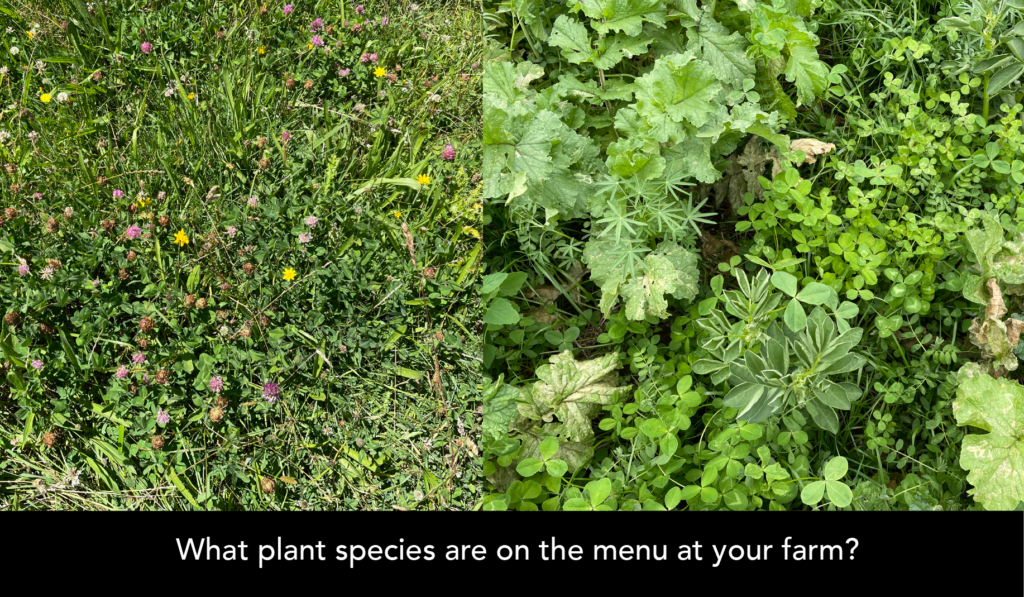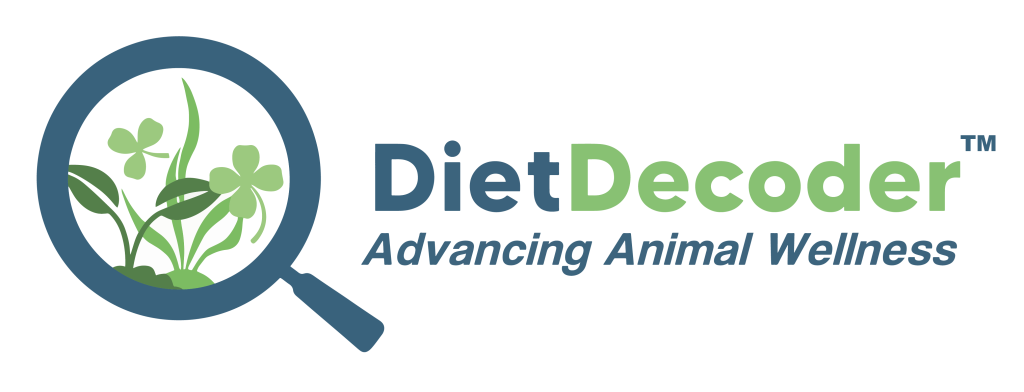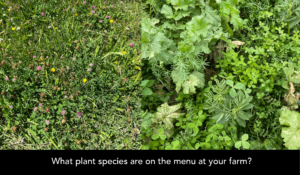This may be a question you ask yourself daily, but I’m not talking about your lunch. Instead, what diversity of pasture species are you offering your cows and why does it matter?
Ryegrass/clover swards, along with common supplementary feeds meet the basic energy and protein requirements of grazing ruminants, but just like humans, ruminants will thrive on more diverse diets. The phytochemical richness, potentially more balanced mineral profiles, and provision of choice that comes from increasing the diversity of the pasture swards on your farm, are all factors that may benefit animal health and performance.
Phytochemical Richness
Ruminants grazing within a diverse habitat in the wild may consume over 50 plant species in a day, with 3 to 5 items typically making up one meal. In the process, they ingest thousands of phytochemical compounds (also referred to as Plant Secondary Compounds or PSC’s) that in small doses are beneficial to animal health and performance.
Examples of these compounds include phenolics (eg. Tannins) and terpenoids and while the details of how these compounds work are still being researched, there are many studies documenting the animal health benefits. The benefits include improved rumen function, improved antioxidant status, improved energy utilisation and protein economy, as well as anthelmintic (anti-parasitic), anti-bacterial and anti-fungal benefits. Many of the plant species typically included in multispecies pasture mixes contain a selection of these beneficial compounds. In comparison, grass and clover species are very low in PSC’s.
Better Balanced Mineral Profiles
The greater the number of species in your sward the greater the potential for more balanced mineral profiles. For example, including herbs such as plantain and chicory will improve calcium levels while sunflowers will improve the magnesium status of a sward. Being able to better meet the mineral nutrition needs of your herd through the pasture means there is potential to reduce inputs, not just in terms of feed, but also mineral supplementation.
Improved Animal Wellbeing
Dietary diversity promotes improved animal wellbeing in a couple of ways. It’s well understood that the nutritional status of an animal is linked to oxidative stress. This oxidative stress plays a role in common production diseases and illnesses such as mastitis, hypocalcaemia and more. When given the choice animals will select more adequately balanced diets, thus improving their nutritional status. Along with the advantages from PSC’s (natural antioxidants) this improves the oxidative status, and thus health and wellbeing of the animal.

It is also suggested that providing dietary choice improves the hedonic (relating to pleasure) wellbeing of grazing livestock. Studies in lambs have shown that those provided with dietary choice had decreased blood cortisol (stress hormone) levels compared to those that were fed a monotonous total mixed ration made up of the same components. I don’t know about you, but I‘d definitely get bored eating the same thing for lunch every day!
While this is a very coarse look at a complex topic, there is a lot of evidence supporting the theory that multispecies pastures provide significant animal health and wellbeing advantages. However, it’s also important to acknowledge that multispecies pastures are not without risk. We recommend you use regular pasture sampling and analysis to ensure you are meeting the nutritional needs of your herd, particularly as you transition from ryegrass/clover swards to more diverse pasture mixes. Care for a tossed green salad for lunch today anyone?


